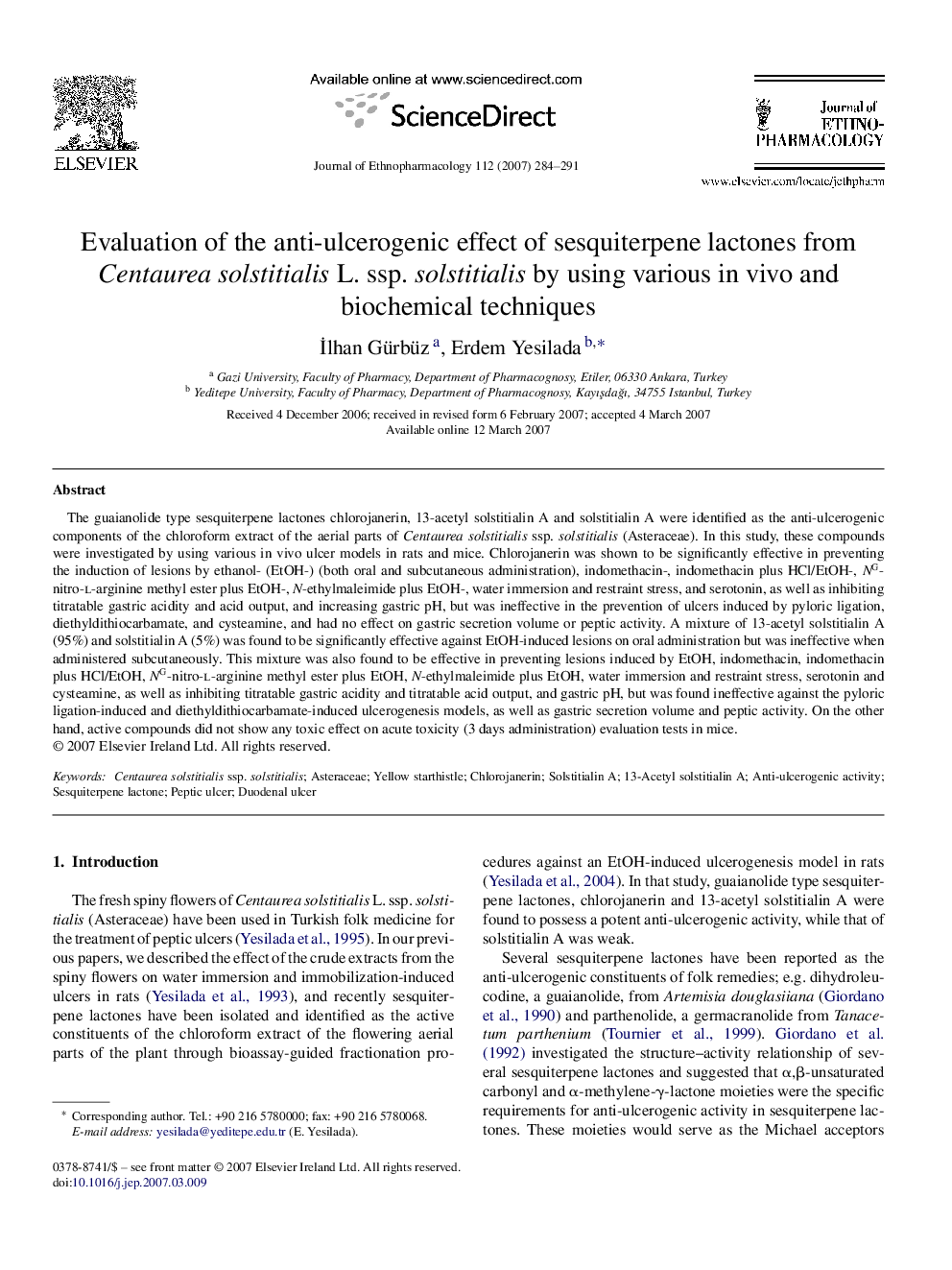| کد مقاله | کد نشریه | سال انتشار | مقاله انگلیسی | نسخه تمام متن |
|---|---|---|---|---|
| 2547930 | 1124074 | 2007 | 8 صفحه PDF | دانلود رایگان |

The guaianolide type sesquiterpene lactones chlorojanerin, 13-acetyl solstitialin A and solstitialin A were identified as the anti-ulcerogenic components of the chloroform extract of the aerial parts of Centaurea solstitialis ssp. solstitialis (Asteraceae). In this study, these compounds were investigated by using various in vivo ulcer models in rats and mice. Chlorojanerin was shown to be significantly effective in preventing the induction of lesions by ethanol- (EtOH-) (both oral and subcutaneous administration), indomethacin-, indomethacin plus HCl/EtOH-, NG-nitro-l-arginine methyl ester plus EtOH-, N-ethylmaleimide plus EtOH-, water immersion and restraint stress, and serotonin, as well as inhibiting titratable gastric acidity and acid output, and increasing gastric pH, but was ineffective in the prevention of ulcers induced by pyloric ligation, diethyldithiocarbamate, and cysteamine, and had no effect on gastric secretion volume or peptic activity. A mixture of 13-acetyl solstitialin A (95%) and solstitialin A (5%) was found to be significantly effective against EtOH-induced lesions on oral administration but was ineffective when administered subcutaneously. This mixture was also found to be effective in preventing lesions induced by EtOH, indomethacin, indomethacin plus HCl/EtOH, NG-nitro-l-arginine methyl ester plus EtOH, N-ethylmaleimide plus EtOH, water immersion and restraint stress, serotonin and cysteamine, as well as inhibiting titratable gastric acidity and titratable acid output, and gastric pH, but was found ineffective against the pyloric ligation-induced and diethyldithiocarbamate-induced ulcerogenesis models, as well as gastric secretion volume and peptic activity. On the other hand, active compounds did not show any toxic effect on acute toxicity (3 days administration) evaluation tests in mice.
Journal: Journal of Ethnopharmacology - Volume 112, Issue 2, 13 June 2007, Pages 284–291